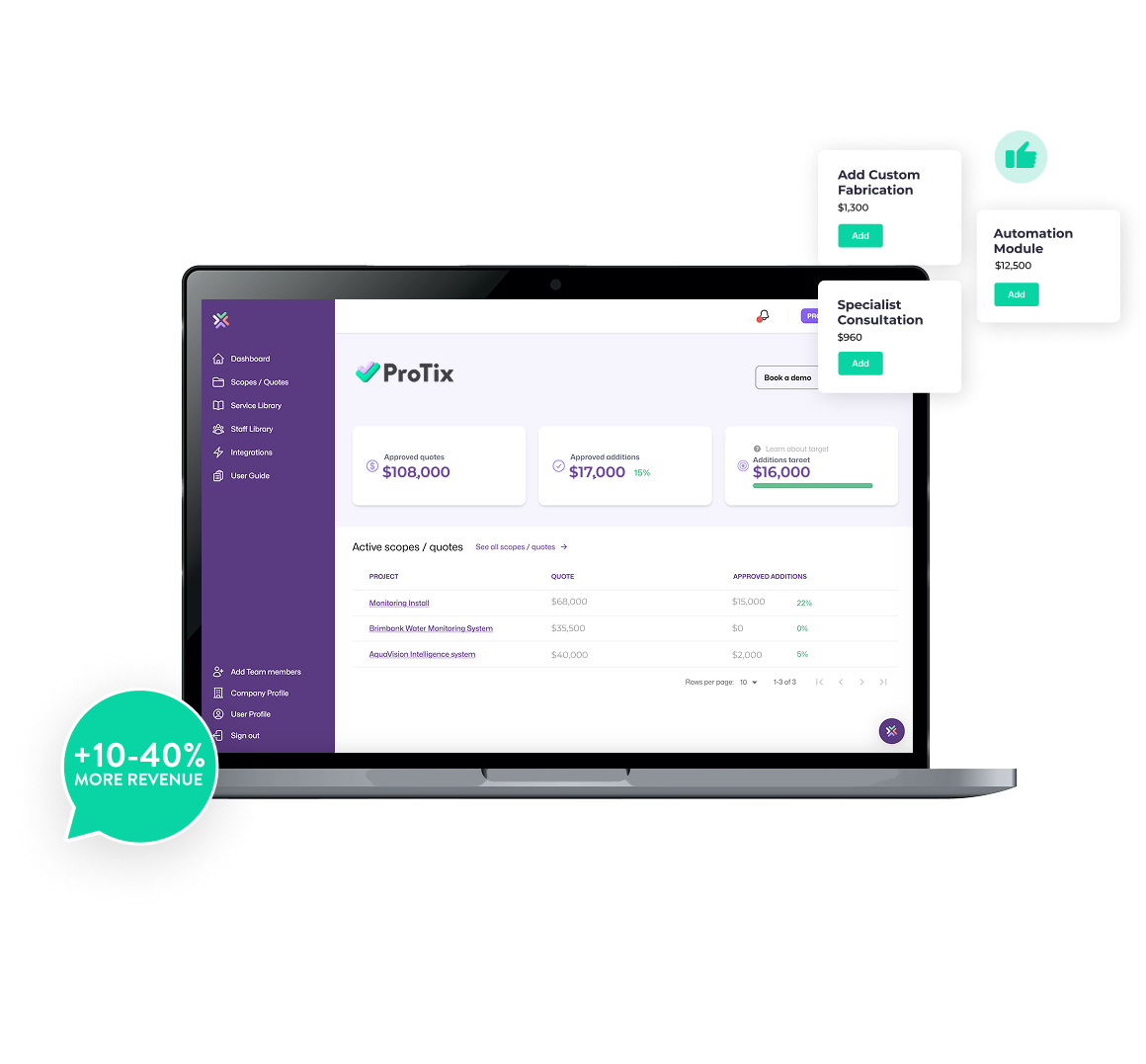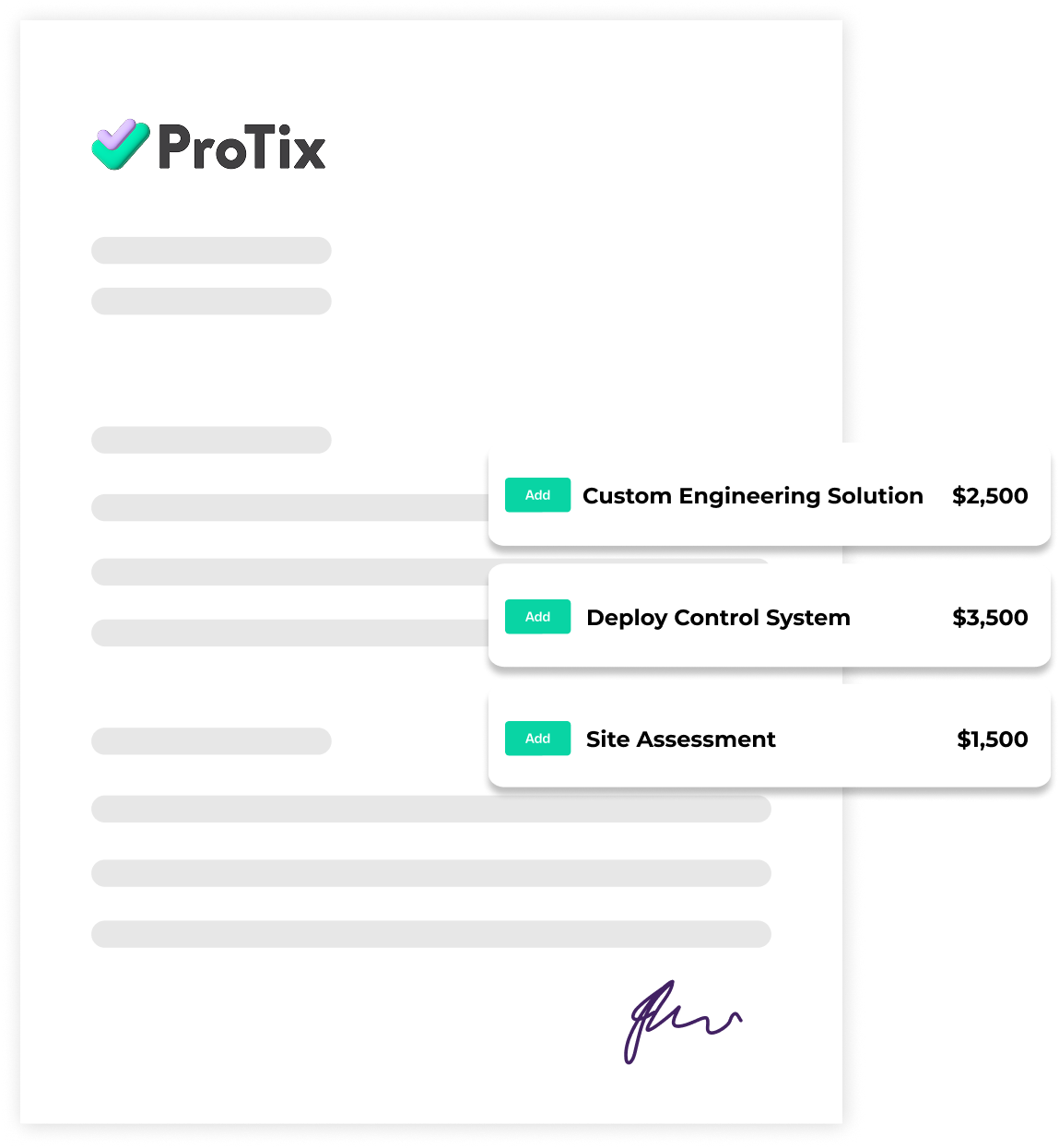Quote in Minutes
AI-powered tools generate fast, accurate quotes for custom parts and services.

The Quoting Tool for Manufacturing Teams. Automate pricing, reduce errors, and capture every additional service.
Start Your Free 30 Day Trial



Scopey automates your pricing, tracks additional requests, and ensures every job is profitable.

AI-powered tools generate fast, accurate quotes for custom parts and services.






Ensure all custom modifications and add-ons are tracked and billed properly.


Standardise your services to create structured, repeatable pricing models.
.png)


.png)


Join manufacturers using Scopey to automate quoting and capture every billable modification.
Start Free for 30 Days




Scoping a manufacturing project involves several critical considerations to ensure successful execution. Firstly, clearly defining the project objectives is essential. This includes understanding the desired outcomes, product specifications, quality standards, and delivery timelines. A well-articulated objective serves as a foundation for all subsequent planning and decision-making processes. Secondly, assessing resource availability is crucial. This encompasses evaluating the availability of raw materials, machinery, workforce, and technological capabilities required to meet the project demands. Ensuring that these resources are accessible and sufficient helps in preventing potential bottlenecks during production. Thirdly, understanding regulatory and compliance requirements is vital. Different products and industries are subject to specific regulations and standards. Ensuring that the project adheres to these legal and industry-specific guidelines not only guarantees compliance but also enhances the product's market acceptance and credibility. Additionally, evaluating the supply chain and logistics is important. This involves analyzing the efficiency of procurement processes, inventory management, and distribution networks to ensure timely delivery of materials and finished products. A robust supply chain minimizes delays and reduces operational costs. Lastly, engaging stakeholders—including suppliers, customers, and internal teams—throughout the planning process fosters collaboration and ensures that the project aligns with the expectations and requirements of all parties involved. Their input can provide valuable insights into potential challenges and facilitate smoother project execution.

Developing precise and competitive quotes for manufacturing services requires a meticulous approach to cost estimation and market analysis. Initially, conducting a comprehensive cost analysis is essential. This process involves itemizing all potential expenses, including raw materials, labor, overhead, machinery depreciation, and quality control measures. A thorough understanding of these costs forms the basis of an accurate quote. Next, employing standardized estimation techniques enhances the reliability of the quotes. Methods such as activity-based costing, which assigns costs to specific activities related to production, can provide a detailed view of the project's financial requirements. This technique is particularly useful for complex projects with multiple components. Additionally, staying informed about current market trends and competitor pricing is crucial. Regular market research helps in positioning your services competitively, ensuring that your pricing reflects both the value provided and the prevailing rates in the industry. Transparency in the quoting process further builds client trust. Providing a clear breakdown of costs, outlining what is included in the service, and specifying any potential additional charges can prevent misunderstandings and foster positive client relationships. Utilizing automated quoting tools can also streamline the process, reducing the likelihood of errors and expediting response times to client inquiries.

Manufacturing projects often encounter several challenges that can impact their success if not proactively managed. One prevalent issue is scope creep, where the project's requirements expand beyond the original objectives, leading to increased costs and extended timelines. To mitigate this, it's essential to establish a well-defined project scope at the outset and implement a formal change management process. This approach ensures that any modifications are thoroughly evaluated and approved before implementation, maintaining control over the project's direction. Another challenge is the underestimation of costs and timeframes. Inaccurate estimations can result from unforeseen technical difficulties, evolving client requirements, or overlooked components. Employing robust estimation techniques, such as parametric estimating—using statistical relationships between historical data and other variables—can enhance accuracy. Additionally, setting aside a contingency budget, typically around 10-15% of the total project cost, can provide a financial buffer for unexpected expenses. Quality control issues also pose significant challenges. Ensuring that products meet specified standards requires implementing rigorous quality assurance processes, regular inspections, and employee training programs. Addressing these challenges through meticulous planning, stakeholder engagement, and continuous monitoring enhances the likelihood of project success and contributes to the delivery of high-quality manufacturing outcomes.
